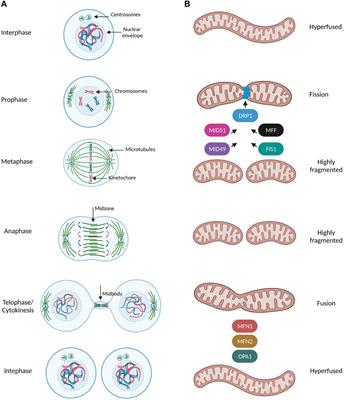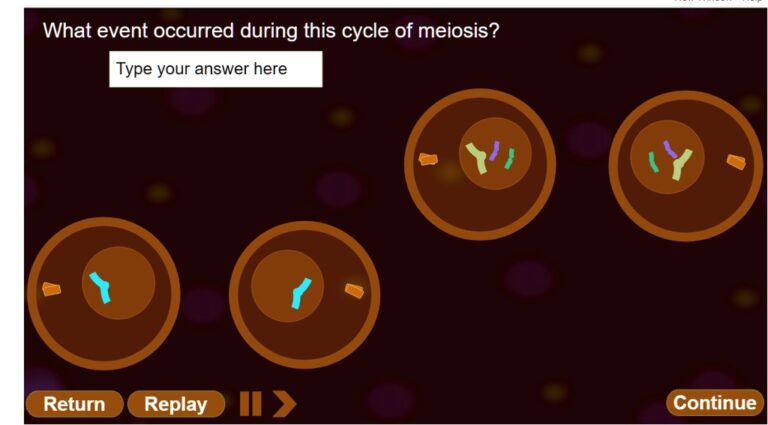Have you ever wondered what events occur during the intricate cycle of meiosis? Delving into the realm of cellular division, understanding the phases and processes involved in meiosis is crucial to comprehend the complexities of genetic diversity. Meiosis, a fundamental process in sexual reproduction, involves two consecutive divisions that result in four haploid daughter cells. Throughout this cycle, various crucial events take place, including prophase, metaphase, anaphase, and telophase. Each phase plays a unique role in ensuring the proper distribution of genetic material. Join us on a deep dive into the world of meiosis to unravel the mysteries of what truly occurs during this fascinating cellular division.
Introduction to Meiosis

Meiosis is a fundamental process of cell division that occurs in sexually reproducing organisms. It involves the division of a single diploid cell into four haploid cells, each containing half the number of chromosomes as the parent cell. This process is essential for the production of gametes, such as eggs and sperm, which are necessary for sexual reproduction.
The Stages of Meiosis
Meiosis consists of two main stages: meiosis I and meiosis II. During meiosis I, homologous chromosomes pair up and exchange genetic material in a process called crossing over. This results in genetic diversity among the offspring.
Meiosis II is similar to mitosis, with the main difference being that the chromosomes are not duplicated before division. This results in the formation of four genetically unique haploid cells at the end of the process.
Significance of Meiosis in Genetic Variation
Meiosis plays a crucial role in generating genetic diversity within a population. This is achieved through the random assortment of chromosomes during cell division and the exchange of genetic material between homologous chromosomes.
Genetic diversity is vital for the adaptation and evolution of species, as it increases the chances of survival in changing environments.
Overview of Meiosis Cycles
Meiosis is a crucial cellular process that results in the formation of gametes, which are reproductive cells responsible for sexual reproduction. This cycle of cell division involves two consecutive divisions, known as Meiosis I and Meiosis II, resulting in the production of four haploid daughter cells from a single diploid parent cell.
Phases of Meiosis
Meiosis can be divided into several stages, including:
- Prophase I: This stage involves the pairing of homologous chromosomes and crossing over, leading to genetic diversity.
- Metaphase I: Chromosomes align along the cell’s equator, attached to spindle fibers.
- Anaphase I: Homologous chromosomes separate and move towards opposite poles.
- Telophase I: Chromosomes reach the poles, and the cell undergoes cytokinesis, resulting in two haploid cells.
- Prophase II: The nuclear envelope breaks down, and spindle fibers start to form.
- Metaphase II: Chromosomes align at the equator of the cell.
- Anaphase II: Sister chromatids separate and move towards opposite poles.
- Telophase II: Four haploid daughter cells are formed, each with half the number of chromosomes as the original parent cell.
The Importance of Meiosis
Meiosis plays a crucial role in genetic variation, as it introduces new gene combinations through the process of crossing over during Prophase I. This genetic diversity is vital for the survival and adaptation of species in changing environments.
Prophase I – The Beginning of Chromosome Condensation
Prophase I is the initial phase of meiosis, where chromosomes start to condense in preparation for division. This crucial stage involves a series of complex processes that ensure genetic material is accurately distributed to daughter cells.
Chromatin Condensation
During prophase I, chromatin, which consists of DNA and proteins, condenses into visible structures known as chromosomes. This condensation allows for easier manipulation and segregation of genetic material during meiosis.
The condensation process is essential for maintaining genetic integrity throughout cell division.
Homologous Chromosome Pairing
Another key event during prophase I is the pairing of homologous chromosomes, a process called synapsis. This pairing is crucial for genetic recombination, where genetic material is exchanged between maternal and paternal chromosomes.
This crossing over contributes to genetic diversity among offspring.
- Homologous chromosome pairing enhances genetic variability.
- Crossing over results in unique combinations of genetic material.
Metaphase I and Anaphase I – Chromosome Alignment and Separation
During metaphase I of meiosis, homologous pairs of chromosomes align at the metaphase plate. This is a crucial step where each pair attaches to the spindle fibers via kinetochores. The alignment ensures proper pairing before separation occurs.
Chromosome Alignment in Metaphase I
In metaphase I, the homologous chromosomes are arranged in pairs, with one chromosome from each parent aligned next to each other. This alignment is essential for the subsequent separation process.
Metaphase I ensures that each daughter cell receives one chromosome from each homologous pair, promoting genetic diversity.
Chromosome Separation in Anaphase I
Following metaphase I, anaphase I is characterized by the separation of homologous chromosomes. The spindle fibers contract, pulling the homologous chromosomes apart towards opposite poles of the cell.
This separation is crucial for ensuring that each daughter cell receives a haploid set of chromosomes with a unique combination of genetic material.
Telophase I and Cytokinesis I – Division of the Cytoplasm
Telophase I is the stage in meiosis following the completion of the first meiotic division, where the separated homologous chromosomes reach the opposite poles of the cell. Simultaneously, cytokinesis I occurs, leading to the division of the cytoplasm.
Telophase I Process
During Telophase I, the nuclear membrane starts to re-form around the two sets of chromosomes at each pole. The chromosomes begin to decondense, and the nucleoli reappear. At this point, the cell is preparing for the second round of division.
In the meantime, cytokinesis I progresses, where the cytoplasm physically divides, resulting in two distinct cells, each containing one set of duplicated chromosomes. This division helps ensure that each daughter cell receives the necessary genetic material for further development.
Significance of Telophase I and Cytokinesis I
Telophase I and Cytokinesis I are crucial steps in meiosis as they mark the completion of the first stage of cell division, resulting in cells with a haploid number of chromosomes. These newly formed cells are now prepared for the second meiotic division, which will further reduce the chromosome number to produce genetically diverse gametes.
Prophase II, Metaphase II, Anaphase II, and Telophase II – Second Round of Chromosome Division
During the second round of meiosis, also known as Meiosis II, the cell proceeds through Prophase II, Metaphase II, Anaphase II, and Telophase II.
Prophase II
Prophase II begins as soon as a cell divides in Meiosis I. During this phase, the nuclear membrane dissolves, and the chromosomes, each consisting of two sister chromatids, condense. The spindle fibers start to form, preparing to align the chromosomes along the metaphase plate.
Metaphase II
In Metaphase II, the spindle fibers align the chromosomes along the metaphase plate in the center of the cell. The sister chromatids are attached to the spindle fibers at their centromeres, ready for separation in the next phase.
Anaphase II
Anaphase II is characterized by the separation of the sister chromatids. The spindle fibers pull the chromatids apart towards opposite poles of the cell. This ensures that each daughter cell will receive the correct number of chromosomes.
Telophase II
In Telophase II, the separated chromatids reach the opposite poles of the cell. Nuclear envelopes form around the chromosomes, creating two distinct nuclei. Finally, the cytoplasm divides in a process called cytokinesis, resulting in four haploid daughter cells.
Significance of Meiosis Events
Meiosis is a crucial process in cellular division that leads to the formation of gametes, such as eggs and sperm. The significance of meiosis events lies in the genetic diversity it generates through processes like crossing over and independent assortment.
Role in Genetic Diversity
Meiosis plays a vital role in generating genetic variation as it shuffles the genetic material during the formation of gametes. This variation is essential for the adaptation and evolution of species, ensuring the survival of populations in changing environments.
Additionally, crossing over between homologous chromosomes during meiosis leads to the exchange of genetic material, further increasing genetic diversity.
Ensuring Chromosomal Stability
Another critical significance of meiosis events is in ensuring chromosomal stability. Through processes like homologous recombination and chromosome segregation, meiosis helps in maintaining the correct number of chromosomes in gametes.
- Homologous recombination allows for the repair of DNA damage and ensures the proper alignment of homologous chromosomes.
- Chromosome segregation ensures that each gamete receives the correct number of chromosomes, preventing abnormalities like aneuploidy.
And Implications
Understanding what event occurred during this cycle of meiosis has profound implications for genetics and evolutionary studies. By comprehending the intricate process of meiosis, scientists can unravel the mysteries of genetic variation and inheritance.
Genetic Diversity
Meiosis is the key process responsible for creating genetic diversity in sexually reproducing organisms. During this cycle, genetic material is shuffled and recombined, leading to the formation of unique combinations of genes in offspring.
This genetic variation plays a crucial role in the survival and adaptation of species to changing environments, highlighting the significance of meiosis in the evolutionary process. Evolutionary biologists study these variations to understand how species evolve over time.
Biomedical Applications
Advancements in our knowledge of meiosis have paved the way for significant breakthroughs in the field of medicine. Understanding the errors that can occur during meiosis, such as nondisjunction, has provided valuable insights into genetic disorders like Down syndrome.
Researchers are continually exploring the links between meiotic errors and various health conditions, offering hope for improved diagnostic tools and potential treatment strategies in the future. Medical professionals rely on this information to better assist patients with genetic conditions.
Frequently Asked Questions
-
- What is meiosis?
- Meiosis is a type of cell division that occurs in sexually reproducing organisms to produce gametes, or sex cells, with half the number of chromosomes.
-
- How many stages are there in meiosis?
- Meiosis consists of two main stages: Meiosis I and Meiosis II, each with prophase, metaphase, anaphase, and telophase.
-
- What event occurs during prophase I of meiosis?
- During prophase I of meiosis, homologous chromosomes pair up and undergo genetic recombination, a process known as crossing over.
-
- What is the significance of crossing over during meiosis?
- Crossing over during meiosis increases genetic diversity by creating new combinations of genes on chromosomes, leading to unique offspring.
-
- What happens during anaphase I of meiosis?
- During anaphase I of meiosis, homologous chromosomes separate and move to opposite poles of the cell, while sister chromatids remain attached.
-
- How does meiosis differ from mitosis?
- Meiosis results in the production of gametes with half the number of chromosomes, while mitosis produces identical diploid cells for growth, repair, and asexual reproduction.
-
- What is the end result of meiosis?
- The end result of meiosis is the formation of four genetically unique haploid cells, each with a single set of chromosomes.
Final Thoughts: Understanding Meiosis Events
In conclusion, delving into the cycle of meiosis reveals a fascinating journey of cellular division. The key events that occur during this process include the crossing over of genetic material between homologous chromosomes during prophase I, followed by the alignment and separation of chromosomes during metaphase I and anaphase I. Then, in meiosis II, similar events repeat, leading to the formation of four unique haploid daughter cells. The significance of these events cannot be understated, as they ensure genetic diversity and proper chromosome distribution. Understanding the intricacies of meiosis not only deepens our knowledge of cellular biology but also highlights the complexity and elegance of life’s fundamental processes.

